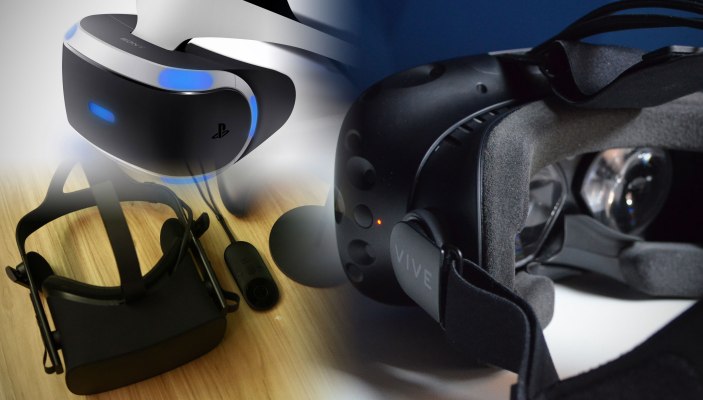I’ve spent quite a bit of the last few months with headsets strapped to my face. Whether that has enriched my life significantly or left it in shambles I cannot say, but I will report that the games are at least starting to get really fun and the video content is only getting better.
The PlayStation VR launched today, and with that there are about three great options for consumers to embrace high-quality VR, but — first off — should you even buy one of these things?
If you’re a hardcore gamer, yes. If you’re a chronic tech early adopter, yes. If you’re someone who is either at Burning Man or always talking about Burning Man, yes. For everyone else, I’m pretty dubious. Basically, don’t save your allowance for one of these things, a Gear VR should more than hold you over.
I think one revelation I’ve come to in the past few months is that update cycles for these PC-powered headsets are probably going to appear much more in line with gaming consoles (probably 3-4 years) rather than something like a mobile phone.
The personal investment is just so high for consumers, and the technological jumps will be so significant in the headsets thanks to rapidly evolving optics/sensors that there’s likely not going to be a ton of compatibility between iterations. In other words, if you’re feeling like you’re interested but are going to wait for round 2 of these high-powered headsets, be prepared to wait until 2019 or 2020.
If you’re still reading and feel like a VR purchase may be in the cards, here’s a quick rundown of the major headsets.
The PlayStation VR
Full Review
+ $499 for headset + camera + controllers
+ Requires a PS4 system
+ Uses legacy Move motion controllers
+ Display resolution: 1080×960 OLED (each eye)
+ Display refresh rate: 120Hz
The HTC Vive
Full Review
+ $799 for everything
+ Requires a beefy PC
+ SteamVR OS
+ Room-scale tracking with motion controllers
+ Display resolution: 1200×1080 OLED (each eye)
+ Display refresh rate: 90Hz
The Oculus Rift
Full Review
+ $599 for headset and Xbox One controller,
+ $199 for Touch controllers (available Dec. 6)
+ Requires a beefy PC
+ Oculus Home OS
+ Display resolution: 1200×1080 AMOLED (each eye)
+ Display refresh rate: 90Hz
Which one?
Okay, so those are the headsets; now which one should you buy? I’m actually going to go ahead and give you a real answer here.
If you don’t want to buy a really expensive computer, buy the PS VR. It’s definitely not the best headset, but the price is right and you won’t have to worry about keeping up with GPU Joneses with periodic system upgrades. Also, Sony’s existing relationships with game studios will likely lead to some AAA titles hitting the platform first.
If you’re a VR diehard who’s personally invested in ensuring that virtual reality remains an open platform, buy the HTC Vive. While Oculus and PlayStation are all about the exclusives, HTC is buying into Valve’s SteamVR system, which hopes to ensure that one piece of content will play across headsets.
But in the end, if you’re comfortable spending the dough, buy the Oculus Rift. The Vive may be the best overall experience right now and its tracking is fantastic, but the new Touch controllers (coming Dec. 6) are the best of the bunch and the amount of awesome Oculus exclusive gaming titles I saw at OC3 was staggering. Some new technologies will allow you to run the Rift on a less powerful PC. Additionally, Oculus’s close alignment with its parent company Facebook will ensure that the VR giant stays on the cutting edge of non-gaming social applications that will undoubtedly grow its network potential. The Xbox One controller days led to lackluster VR content experiences, but the headset’s best days are still ahead of it.
It’s early days, but it’s not way too early. You’re not really going wrong with any of these headsets — they’re a big jump up from the Google Cardboard in capability and complexity and price — but based on your needs, the above might help you find the best experience.
